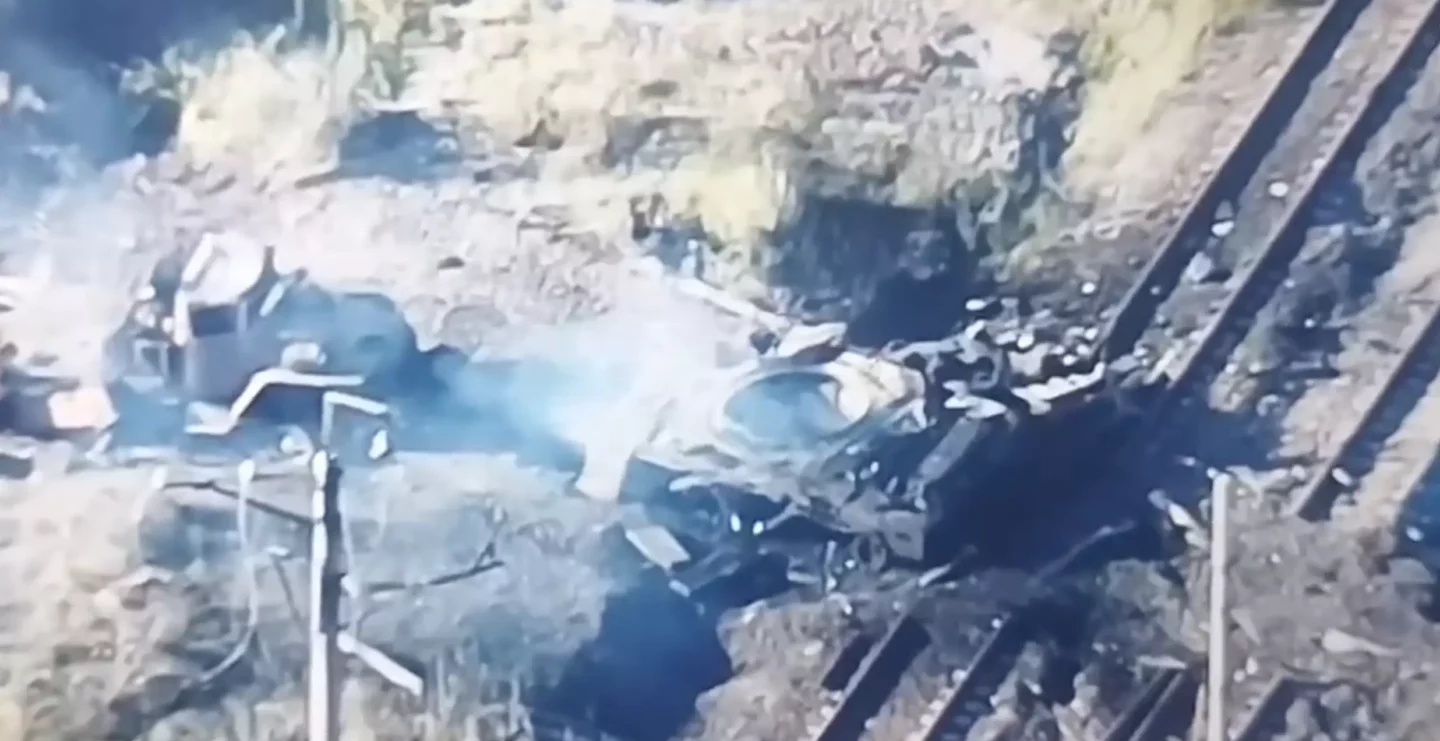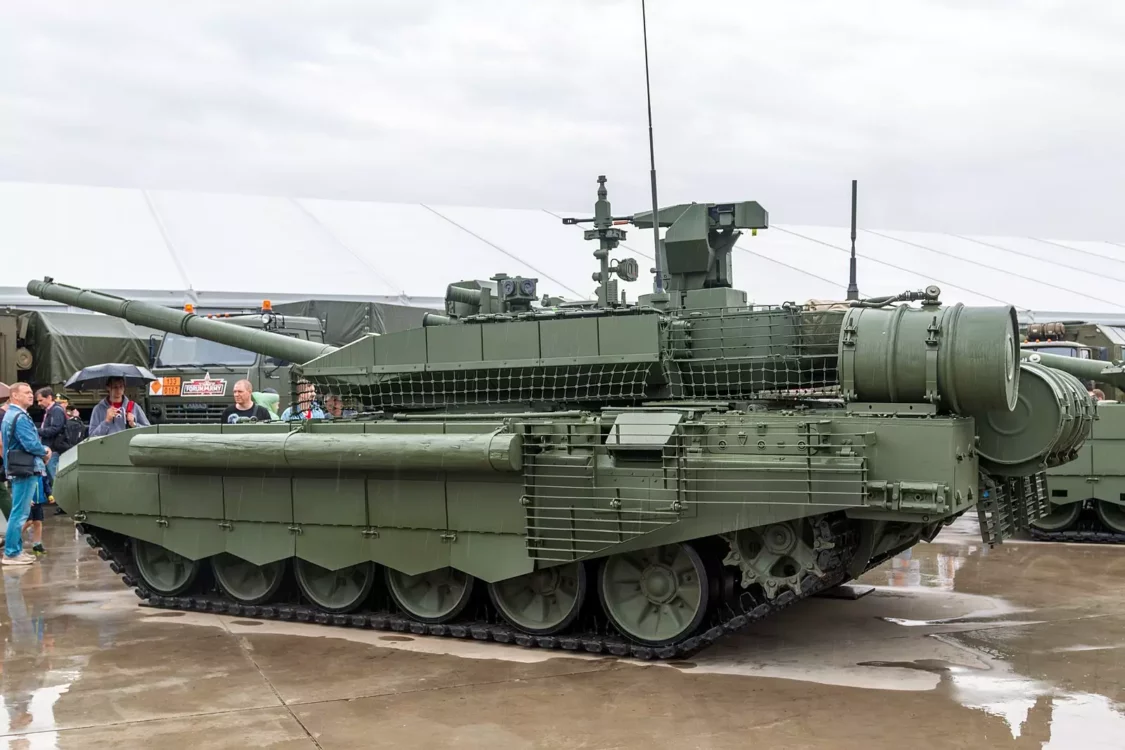Ukrainian forces are using a clever and cheap method to take out Russia’s best tanks
Intense fighting on the ground in Ukraine continues all across the battlefront. The Ukrainian forces are pushing hard against the in-depth Russian defenses trying to achieve an operational breakthrough.
The extensive Russian minefields are slowing down the Ukrainian forces, however, forcing them to adjust their tactics and attack with more caution.
At the same time, the Ukrainians are inflicting serious casualties on the Russian forces.
Due to the very high number of targets and Ukraine’s limited resources, Ukrainian troops have resorted to innovative ways of taking out Russian heavy weapon systems, even including the advanced T-90 main battle tank.
First incapacitate, then destroy

Understanding limitations on long-range fires and the need to preserve ammunition, the Ukrainians are using drone hunter-killer teams to take out Russian T-90 tanks.
The U.S. military has sent Ukraine several hundred Switchblade 300, Switchblade 600, and Phoenix Ghost loitering munitions that are capable of either incapacitating or destroying completely — in the case of the 600 — a Russian tank.
The Ukrainians have also shown remarkable ingenuity, effectively weaponizing civilian drones and putting them to good use on the battlefield.
First, they use drones to spot their target. Then, the hunter-killer teams launch suicide drones to attack and incapacitate Russian T-90 tanks by aiming at their tracks or exhaust.
Once the tank is disabled, the Russian crews almost always abandon it because they know that another hit is coming — and it is coming indeed, but in an innovative way. Instead of wasting expensive and much-needed anti-tank missiles and artillery shells, the Ukrainian hunter-killer teams just fly above the abandoned T-90s with small civilian drones and drop thermobaric grenades through their open hatches. The ensuing fires can reach extremely high temperatures that burn the tanks from the inside.
As the following videos show, the technique is highly effective.
The T-90M Main Battle Tank
The Russian military has lost at least 70 T-90 tanks of all versions. This number concerns casualties that have been visually verified, and the actual number is thus likely higher.
Among the Russian losses are at least 27 T-90M main battle tanks, which is Moscow’s most advanced tank operating in considerable numbers. (Russia has about a dozen T-14 Armata main battle tanks, but their capabilities and fightworthiness are questionable.)
These casualties represent approximately 30 percent of the total number of T-90M tanks in the Russian arsenal. In total, the Russian forces have lost between 2,000 and 4,000 main battle tanks of all types.
The T-90M has improved armor and navigational systems over its T-90 predecessor, a more powerful engine, and a better main gun.
In May 2022, the British Ministry of Defense stated in an assessment that about 100 T-90M tanks were in service amongst Russia’s best-equipped units, including those fighting in Ukraine.
The T-90M’s “upgraded armour, designed to counter anti-tank weaponry, remains vulnerable if unsupported by other force elements,” the ministry added.
Related: The long-range fires that will define the Ukrainian counteroffensive

Former Russian President and current deputy chairman of the Security Council of Russia Dmitry Medvedev boasted in March that the Russian defense industry would make 1,500 T-90M tanks in 2023 to replace casualties and counter Western tanks in Ukrainian service. His claims, however, are extremely unlikely to come to fruition as Western sanctions have hamstrung the Russian aerospace and defense industries.
Indeed, the Russian forces are in such dire need of weapon systems that they have to deploy antiquated T-55/54 and T-64 tanks that date back to the 1950s and 1960s to plug holes in their formations.
Although the Russian military has tens of thousands of tanks in reserve, these weapons systems haven’t been used in years, if not decades, and have often been cannibalized to support frontline tanks. Some have had parts of them stolen and resold on the black market.
Feature Image: Russian T-90M tank destroyed by drone-dropped grenade. (Screenshot Benny_vs_Benny Twitter)
Read more from Sandboxx News
- What is the legendary Black Triangle UFO?
- The Air Force celebrated 100 years of aerial refueling
- X-Planes: Experimental aircraft that changed the world without you knowing
- Did you know that the last trench gun survived until the Iraq War?
- MARSOC Raiders to deploy in smaller, tech-loaded teams as conflict gets more complex

